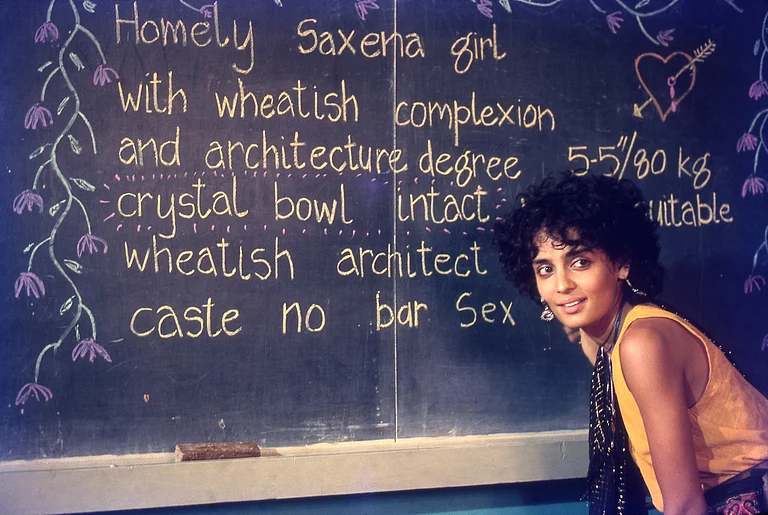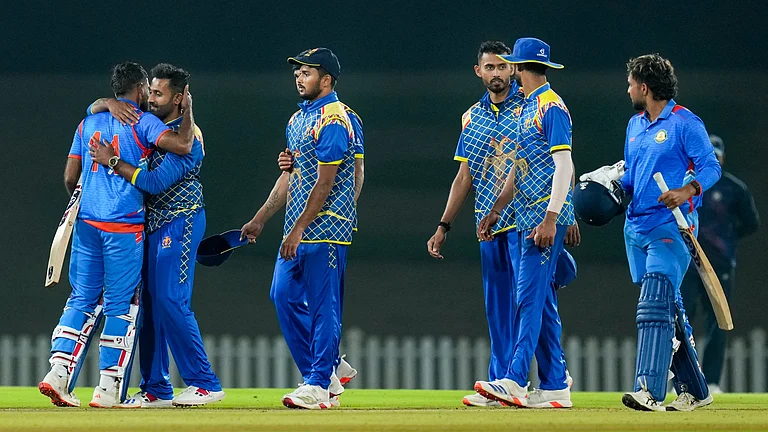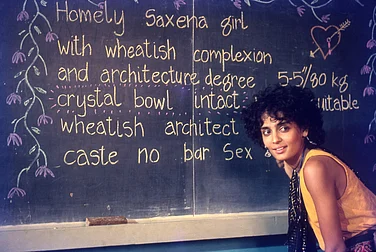Regarding the ongoing debate—that South Indian movies are overshadowing Bollywood ones in popularity, box office returns and storytelling—I have a take that is slightly different than most.
I feel the issue doesn’t only concern South Indian movies. Overall, you can see a paradigm shift in audiences’ tastes since the onset of the pandemic. It was only when people locked up at home had nothing to do for months that the digital world and OTT platforms really took off. The latter became a larger playground when audiences got exposed to many wonderful films and actors across different languages—Hollywood, Bollywood, Tollywood, Mollywood, Korean, Northeast Indian… the lines are now blurred. I think this is what pushed us as filmmakers, producers and actors to gauge what is the consumption pattern in the small towns, villages and grassroots, the B and C sectors, especially since everyone now owns a smartphone and has equal access to online content. OTT is just like the IPL. It introduced more opportunities for Indian talent. In Hindi cinema alone, we discovered a new, talented crop of filmmakers who created such lovely pieces of content like web series Gullak, The Scam, Paatal Lok, and even movies like Sharmaji Nakeem and Kaun Pravin Tambe?
People are no longer concerned whether a movie has an A-lister, or one of the three Khans or star kids. The audience is not only interested in watching Hrithik Roshan or Ranbir Kapoor films. Even Salman Khan couldn’t change the game for Tubelight (2017), because it was not a good film, even though his Bajrangi Bhaijaan (2015) did extremely well, because it had a great plot. If you are not good, people will reject you even if your father was Satyajit Ray. Did we know Yash before KGF Chapter 2? He’s known all over India today, and so are other South Indian actors like Allu Arjun, Fahadh Faasil and Ramachandra Raju.
Having said that, Hindi cinema needs some course correction in terms of content creation. We need to return to telling great stories. Current Telugu favourites RRR and KGF Chapter 2 were not only entertaining, but also shared universal emotions while commenting on realistic issues. A gangster plot set against the Kolar Gold Fields, KGF shows the unconditional love between a mother and her son. Pushpa: The Rise, which highlights the red sandalwood smuggling trade, is about a bastard child fighting for his own place in the world. The stories are metaphorical and have many layers, exactly the kind that connects with the audiences. You can’t sustain a story with inane action. Even the genre-bender RRR has just one purely fantastical scene, of a guy spinning a motorcycle with one hand before letting it fall on the ground. The entire story is about friendship. We can of course go for “pure storytelling”, like PK or 3 Idiots that were devoid of any over-the-top VFX. One of the reasons behind the influx of South Indian remakes in Hindi is that the stories are quite universal from an emotional point of view. Beyond the stylised slow motion and loud action sequences, you need a story to sustain audience interest.

Scriptwriters must inject passion into their storytelling. They must understand why a particular story needs to be told, that too at a particular point in time. Don’t get swayed by lavish sets and gimmicks, because an audience can gauge if a film is honest. The time has come to evolve and experiment, or else fatigue will set in. If you see Salman Khan doing the same thing over five or six films in a row, everything in those films start to seem, look and feel the same. At times, I feel in Hindi cinema, the ‘business project’ aspect takes over content creation. I am not only talking about how multiplexes are given precedence over single screens, but any kind of breakdown. Once the number of songs, actions and locales are fixed, all the stress is placed on getting the right elements for the movie to look ‘wow’, or getting it completed on time, than any focus on the content. This treatment of Hindi films as a ‘project’ of late is why they often end up feeling a bit niche or elite for audiences in small towns. On the other hand, most South Indian films are rooted in Indian middle-class issues, where the audience feels ‘this is our story’.
The belief that ‘hamara audience ko nahi samajh aayega (our audience won’t understand this)’ should be discarded. The audience is way smarter than us. Typically, we try to formulate a certain piece of content based on what we think the audience thinks or feels. But all that has been rubbished by the audience, because I don’t think they have ever rejected a good film. When Ram Gopal Varma made Satya (1998) with a cast of absolute newcomers, audiences lapped it up. It is true that at the time of its release, Andaz Apna Apna (1994) didn’t make a lot of money in the box office. But over time, audiences picked it up and made it into a cult classic.
Of course, stories of underdogs, as in Pushpa and KGF, but also Dangal, Sultan and Toofan, resonate with audiences the world over. Numbers will keep fluctuating, but at the end of the day, the audience needs to find content that is relatable. Then again, people enjoy watching Mission Impossible or Fast & Furious franchisees dubbed in Hindi. There are directors in both markets, like Rajamouli and Sanjay Leela Bhansali, with an appetite for larger-than-life films or spectacles, a genre in itself. However, both industries have also made small-budget films with great storylines. A film made with a budget of Rs 10 crore can rake in Rs 80 crore. Like the Malayalam film Kumbalangi Nights and the Marathi film Sairat, both of which were beautifully told and made more money than what was spent on making them.
I think there is too much unnecessary talk about South Indian films doing better, and that Bollywood heroes are scrambling for roles. I do not think there is any need for the Hindi film industry to panic. Especially senior actors, who have seen enough ups and downs. Nobody gets out of the house saying “today I’m going to make a bad film” or “aaj mein jaake kharab acting karunga (I will deliberately muck up my role today)”. Everyone puts in effort, but sometimes we try and second-guess many things. I am not too sure how a Krissh would fare today, now that the audiences are exposed to the kind of VFX quality put out by Marvel or DC. I personally faced a debacle with Rock On 2. One day after the film was released, demonetisation was announced. Probably, even the audience felt that it didn’t meet expectations or live up to the legacy of Rock On, and there’s no shame in accepting that. It’s about gathering yourself, doing your best and continuing to tell stories you believe. Just focus on that and cut out the noise.
(As told to Ornella D’Souza)
(This appeared in the print edition as "‘Stop Patronising Audiences’")
(Views expressed are personal)
Shujaat Saudagar is the director of Rock On 2 and the upcoming web series Bambai Meri Jaan





















